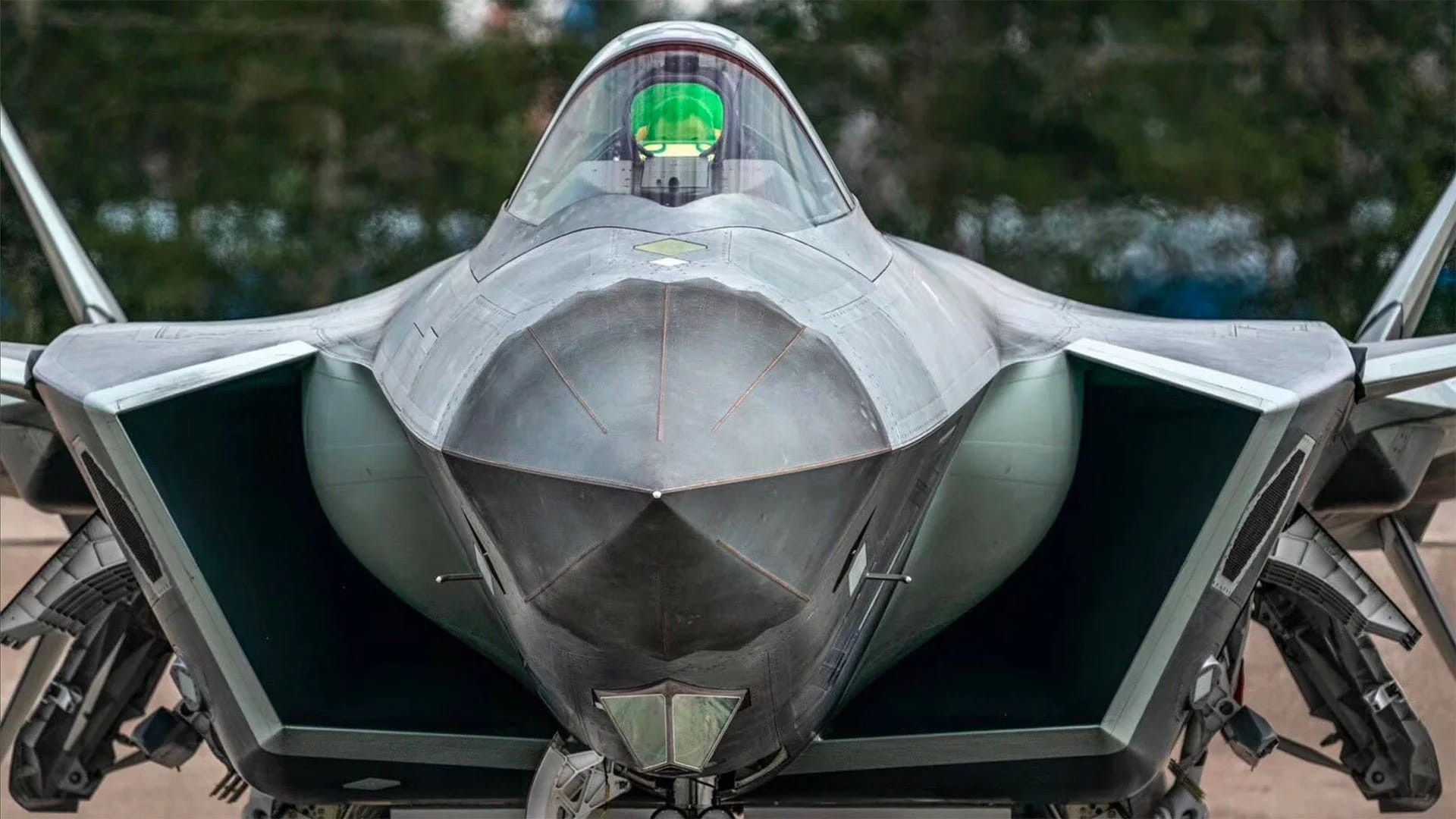Meet the J-20: As tensions ratchet up between China and the West over flashpoints in the region, most notably Taiwan, planners and analysts routinely size up the force comparison between the People’s Liberation Army and the U.S. Department of Defense.
While both countries’ navies are undoubtedly essential to any conflict that might arise, air assets will play a role that is just as large, if not larger. Given the vast reaches of the Pacific Ocean and the relatively slow transit times of ships, modern fighters and bombers are a primary means of projecting power in a region. Missile developments, which allow China to base large stores of “ship-killer” missiles well inland thus denying the U.S. Navy passage in the South China Sea, further emphasize the necessity of air superiority.
But how do U.S. and Chinese fighters stack up? The J-20 “Mighty Dragon” is China’s fifth-generation answer to the F-22 and F-35. The rapid pace of development and perceived capabilities give the impression that it is more than a match for the F-22 Raptor, the U.S. Air Force’s premier air superiority platform. Here’s how the two actually stack up.
Payload
An aircraft that is the best dogfighter in the world, able to easily saddle in on a bandit’s “six,” is virtually useless if it can’t actually shoot its opponent. Modern fighters rely heavily on missiles and more missiles obviously means more fire opportunities. This could come in one engagement – a missile could fail to arm or the bandit could use expendables to defeat the shot – or it could allow the fighter to stay on station longer and engage more enemies. Weapons payload is complicated on fifth-generation fighters such as the J-20 and the F-22 because in order to maintain a stealth profile, the missiles must be stored in the body of the aircraft.
The F-22 has the edge here, able to store six AIM-120 AMRAAMs and two AIM-9X Sidewinders in its weapons bay while the J-20 only has room for four beyond visual range (BVR) missiles and within visual range (WVR) missiles. Furthermore, the F-22 has a gun while the J-20 reportedly does not. Missiles may be the name of the game but as many F-4 Phantom pilots found during the Vietnam War, air-to-air combat often ends up in gun range. Even if you have seen an adversary fire off all their missiles, knowing they can still close for a gun kill will make any pilot wary.
Range
Range is an essential part of the strategy in Pacific theater operations. The Mighty Dragon dominates in this arena, able to travel over 1,000 nautical miles on internal fuel, nearly doubling the F-22 which can’t quite manage 600 nautical miles. This status quo may soon change however as Lockheed Martin is reportedly developing stealth fuel tanks to fit on the F-22 which could increase its range considerably.
J-20 Performance
Any number of factors can contribute to an aircraft’s performance, however, three key figures tell quite a bit: thrust, speed, and ceiling. In all three categories, the J-20 just slightly edges out the F-22 with some caveats. Each WS-15 engine on the Mighty Dragon produces about 1,000 more pounds of thrust than the Pratt and Whitney F119s on the Raptor. The engines in the Chinese jet are newly developed, however, and have yet to face real challenges or lifecycle wear. By contrast, the USAF and Lockheed Martin have spent years ironing out any deficiencies in the F119 and have solid best practices for maintenance and operation.
Airspeed equals energy, which is one of the key concepts of dogfighting, and here again, the J-20 barely beats the F-22, topping out at Mach 2.55 to the Raptor’s Mach 2.0. Both are capable of supercruise – flying supersonic without using fuel-intensive afterburners. The final metric is service ceiling, which can equate to a significant advantage if one fighter can fly much higher. The J-20 can reportedly reach 65,000 feet while the F-22 tops out at 50,000. The actual number is classified however and in all likelihood, the two are comparable in ceiling.
On paper, the J-20 has some advantages while the F-22 boasts others. Practically, however, as General Kenneth Wilsbach, head of U.S. Air Forces Pacific said “I don’t think that [the J-20] is a dominating aircraft at this point, compared to what we have.” While the Chinese aerospace industry is undoubtedly making great strides in producing advanced aircraft, the U.S. still has the advantage.
Maya Carlin, a Senior Editor for 19FortyFive, is an analyst with the Center for Security Policy and a former Anna Sobol Levy Fellow at IDC Herzliya in Israel. She has by-lines in many publications, including The National Interest, Jerusalem Post, and Times of Israel. You can follow her on Twitter: @MayaCarlin.

